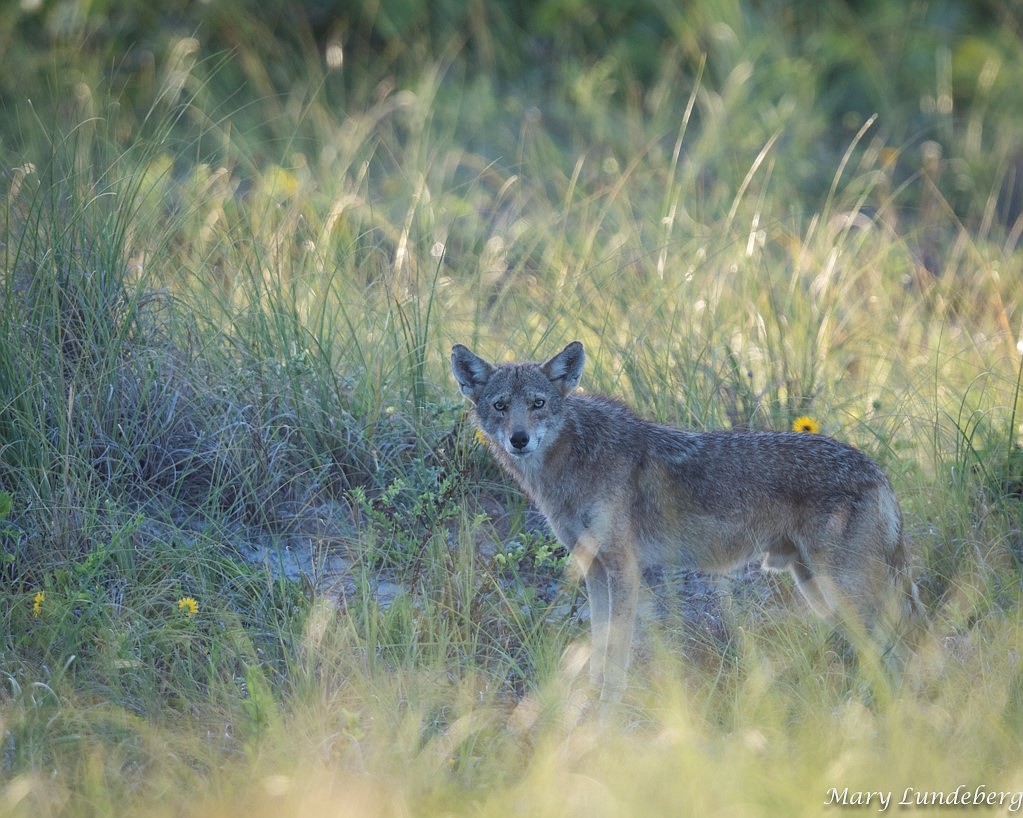- December 5, 2025
-
-
Loading

Loading

More than 40 people came to Longboat Key's Town Hall Aug. 30 to hear what the Florida Fish and Wildlife Conservation Commission had to say about coyotes, a relative newcomer to the island community.
And what they were told is that the animal, which weighs just under 30 pounds, is extremely smart, adaptable and is not much interested in contact with humans.
“You can’t get rid of coyotes,” said Angeline Scotten, an FWC wildlife biologist. “They are territorial, adaptable and intelligent.”
Town officials invited the FWC to hold a workshop after more than 19 coyote sightings have been reported since July 16. Reports of coyotes on Longboat date back four years, when one was spotted on the south end of the island, said Police Chief Pete Cumming. Reports of coyotes in Sarasota County go back to 1997.
The chief worry of residents who attended the workshop was and still is pet safety. Even though coyote attacks are few and far between, they worried whether a coyote would attack their dog during a walk.
“My wife is afraid to walk the dog at night,” said Myron Bernstein.
Scotten, the FWC’s regional coyote expert, said the animal has been known to attack pets. She said dogs should be walked on short leashes, no more than six feet in length. Because the coyote is a timid animal, she said if one is spotted, make as much noise as possible to scare it away.
A study done of the stomach contents of 90 coyotes, found 31% of its diet is small mammals; 22% is fruits and vegetables and 10% percent is connected to humans, such as pet food or garbage, she said.
“Dog food is one of the reasons you find coyotes in residential communities,” said Scotten, who showed a slide of a McDonald’s food wrapper that was found in one coyote’s stomach.
The animal, which helps control smaller predators – such as raccoons – is drawn to areas where the food sources are plentiful. The more food available, the larger the coyote litters, which have the potential to number a dozen in size.
“Don’t feed the coyotes,” she said. “Secure your garbage, clean up the pet food, fallen fruit and bird feeders.”
FWC officials said it is likely there are two breeding pairs on the 11-mile island, though they are not sure. Normally, coyotes in more rural areas have large territories. In a more urban area, such as Longboat, the territory could be as small as three square miles, she said.
“Why can’t we try and stop this before it gets out of control, like snakes in the Everglades,” asked resident Greg Fiore, referring to invasive species such as pythons.
Scotten said it is possible to trap coyotes, but that it means someone’s dog or cat could end up being trapped. If the animal was relocated to a more rural area, chances are it would return to Longboat because it is territorial.
“There is no way to know how long that would take,” she said.
Town manager Tom Harmer said he was pleased with the workshop, which gave the public more information.
“We’ll continue to look at options and strategies,” Harmer said. “This was our workshop, too.”